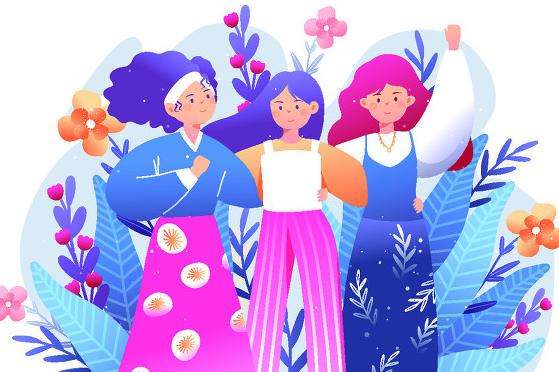Embroidery revival pays off in rural Hubei county


A college graduate who longed for a slower life returned from Wuhan to her hometown in Huangmei county, Hubei province, and started a career based on its rich embroidery tradition.
Hong Li, 35, has trained about 100 rural women in the county to embroider for her workshop, which sells their art across the province.
Huangmei embroidery, a national intangible cultural heritage, was handed down thousands of years ago. The skill uses multicolored silk threads to form patterns of flowers or animals on scarves, clothing, curtains and tents.
In the old days, there was a saying that a good wife in Huangmei had to master the skill. Hong learned it from her mother and grandmother when she was a teenager.
"The embroidery patterns reflect simple life ideals and the aesthetic tastes of ordinary people," she said. "It is increasingly rare and should be treasured as a work of art."
For example, art pieces usually feature fish to express a wish for wealth or a phoenix as an auspicious omen.
After Hong graduated from Hubei University of Technology, she learned other embroidery skills from masters in Suzhou, Jiangsu province, Wuhan, Hubei's provincial capital, and Shanghai.
In May 2020, she founded a company with her partner, selling Huangmei embroidery pieces made by her and other local women.
"I made embroidery my career because I had always longed for a slow-paced life, especially when I saw grannies spending whole mornings doing embroidery at their doors," she said.
"However, stitching is challenging and requires endurance and patience. The fingerprints on two of my fingers have almost been erased due to the work."
Her confidence in the career was boosted when someone who loves the embroidery asked Hong to make tailor-made decorations for an entire house.
Hong's stitching product patterns have grown from 10 to about 100, and her workshop earns about 1 million yuan ($157,800) a year.
Each woman who contributes crafts to her workshop earns at least 2,000 yuan a month. Local women who used to work as migrant workers or were unemployed learn stitching from Hong.
"At first, I chose it out of my desire for a slow life," she said. "But now, I feel obliged to pass it on."
She plans to expand production, but said that is difficult because traditional Huangmei embroidery relies on pure handiwork, which is both a selling point as well as a barrier for growth.
"Pure handiwork is time-consuming and labor-intensive, so we can't increase the output immediately," Hong said.
In addition, some people prefer to buy a machine-made embroidered piece rather than a handmade one though the patterns and quality look similar, as the handmade one would usually cost more. "It is difficult to resist the impact of modern industrial products," she said.
Hong is designing semifinished products that can be put onto a production line. She also plans to establish more training bases and hold creative skills competitions to revive the craft.




